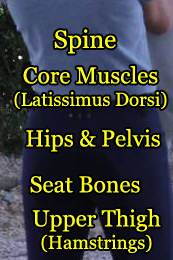Lameness – Common Ailments and Remedies

There are an infinite number of musculo-skeletal or hoof problems that might be the cause or your horse’s lameness. Some common problems are thrush, bruises, abscesses, sand cracks, bowed tendons, laminitis (founder), or navicular. As you rule out possibilities, keep the mechanic’s adage in mind; start with the simple things first and then progress to more difficult or severe problems.
Thrush is a relatively minor problem if caught early and treated. It is an infection of the sole of the hoof due to a bacterial growth usually caused by standing in urine and feces for prolonged periods. Once you have smelled the foul odor of thrush, you will never again have trouble diagnosing this problem. Your farrier can trim out the infection with a hoof knife. The hoof should then be treated topically with an over-the-counter iodine or copper sulfate solution.
Lameness – Bruises
Bruises can be very painful. Usually your horse has stepped on a large or irregular shaped stone that has caused a localized swelling in the sole of the hoof. Anti-inflammatory medicines can be helpful with bad bruises, but usually time is the only real cure.
Lameness – Abscesses

Abscesses are usually due to an errant nail or a puncture from something in the pasture or stall. These can be very painful to the horse. Once the abscess is located and drained, however, relief is immediate. Relieving a serious abscess is usually done by your veterinarian or farrier. The abscess is opened with a hoof knife and flushed with iodine. The wound is then packed with a drawing agent and a padded shoe is used to protect the hoof. In less severe cases, simply soaking a couple of times a day in Epsom salts is fine.
Lameness – Sand Cracks
Sand Cracks usually look worse than they are. Superficial cracks rarely need anything more than hoof dressing to keep the hoof moist, similar to treating chapped lips. If your horse is truly lame, the crack is most likely the full thickness of the hoof wall. If the hoof wall is compromised, your farrier may have to do some repair with either a bonding elastomer or good old-fashioned screws and wire. Many times a boot can give enough support to the hoof wall to allow the horse to perform light work.
Lameness – Bowed Tendons
Bowed Tendon lameness can be quite frightening because of the dramatic way the horse will move while trying to relieve pressure from the affected tendon. This type of injury is usually minor and temporary with little or no lasting effects. Rest from strenuous work, while maintaining light exercise for circulation and flexibility, are the best treatments. Your horse will let you know when he is ready to work again.
 Lameness – Laminitis
Lameness – Laminitis
Laminitis, commonly known as founder, is bad news. Several causes have been proposed, but any shock to the horse’s system that produces a release of histamine and causes swelling within the hoof capsule can potentially cause a horse to founder. The swelling inside the confined space of the hoof causes failure of the structures that glue the hoof wall to the internal bones. In severe cases, the bones will rotate over time until the horse is actually unable to stand. Treatment by your veterinarian and farrier, in concert, may return some usefulness, however, a foundered horse will never be the same.
 Lameness – Navicular
Lameness – Navicular
Navicular is very common in performance horses. It usually occurs in the forelimbs, and is basically due to damage of the structures that surround, confine, and support the navicular bone. Concussive force causes swelling which results in pressure to the blood vessels and ligaments. This pressure eventually causes reduction of the blood supply to the navicular bursa which results in chronic pain and atrophy of the tissues. Horses that are turned out regularly for extended periods rarely have this problem because they are able to maintain the muscularity and circulation necessary for healthy joints. A stall bound or rarely used horse will be much more prone to navicular and to other joint diseases, as well.
Although often alarming and definitely inconvenient, most forms of equine lameness are minor and temporary. The rule of thumb should be an ounce of prevention is worth a pound of cure. Allow your horse to be a horse. Regular turn out for extended periods in a safe pasture is essential. This allows your horse to exercise appropriately without your help. His inherent nature will allow him to maintain the strength and flexibility that will keep the veterinarian in his office and not at your barn.
Author: Dressage Academy
What Makes a Dressage Warm-up Good?
You May Also Like

The Seat
February 7, 2018
Long and Low – The Foundation of All Good Dressage Training
October 25, 2017